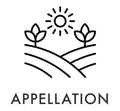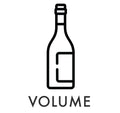Chateau Lafite Rothschild Pauillac 2002 750ml










The 2002 Château Lafite Rothschild is an elegant, medium-bodied wine showing classic Lafite character. Made from 87% Cabernet Sauvignon, 9.5% Merlot, and 3.5% Cabernet Franc, it opens with graphite, black currant, and mineral notes. Despite a challenging season, a sunny September ripened the fruit beautifully. Now softening with age, it reveals savory black fruit, cigar notes, and fine tannins. Balanced, refined, and rewarding with further cellaring.
The Wine Advocate | RP 94
Published: Apr 29, 2005
Drink: 2008-2025
A brilliant offering and a candidate for wine of the vintage, this is classic Lafite that reminded me somewhat of the 1976, although the vintage conditions were completely different. This is a medium-weight, quintessentially elegant style of Lafite with notes of lead pencil shavings/graphite along with black currants, plums, and crushed rocks/mineral. Wonderfully pure, dense, with a deep ruby/purple color and loads of fruit, definition, and a long finish, this is a brilliant, elegant Lafite Rothschild that builds incrementally in the mouth and has more power and density than it initially seems. Anticipated maturity: 2008-2025.
Decanter | D 93
Published: May 24, 2018
Drink: 2018-2030
Another Indian summer vintage (with useful northerly winds) that followed a difficult July and August. This has still-tight tannins and remains deep in colour, with just the very beginnings of whispering its age. After a few minutes in the glass, cigar notes curl up and out, followed by beautifully elegant, savoury-edged black fruit and tea leaf notes. This was extremely austere at first, but it's now beginning to soften and is likely to develop similarly to the 1999, which makes it one to watch. Will reward further cellaring.
Jancisrobinson.com | JR 17
Published: May 30, 2018
Drink: 2020-2035
The Indian summer, this great weather in early autumn, once again saved a vintage that conveyed deep emotions to the passionate winegrowers that we are. We had known since May that the crop would not be large, flowering having taken place under cold and damp conditions, favouring poor fruit set and uneven ripening. The heat in June had given us high hopes, quickly dashed by a grey and rainy July and August. In early September, therefore, the Bordelais were not very confident. But long live the Indian summer, that accompanied the final ripening of the grapes under exceptional conditions!
This was our first mystery vintage, served blind. I initially guessed 2001, largely because I'd put 2002 completely out of my mind. Very rich and nuanced on the nose, then there was an impression of sweet ink, before sweet soft fruit that almost covers the perceptible tannins that impart a slightly drying finish. The acidity is a little obvious. Just slightly pinched and awkward at the moment and the balance is less than perfect but it's very good for a 2002!
lafite.com
2002 vintage
The early bud burst due to a hot and dry winter was followed by a rather cold and rainy period during flowering which led to incidents such as coulure (flower abortion) and millerandage (poor fertilization with mixed size berries). As from the beginning of June, the yield was expected to be low.
The rather cool months of July and August were unexceptional as was the weather since the beginning of the year. However, this did not halt the ripening and veraison of the grapes. The weather was excellent when the harvest neared; September was superb, sunny and dry with a north-east wind which accelerated the ripening process.
A radiant sun shone throughout the harvests, which allowed the grapes to reach full maturity calmly. The Merlots were picked between 26 September and 1 October, followed by the superb Cabernet Francs, then the Cabernet Sauvignons until 8 October and to end with the Petit Verdots.
The grapes that had been affected by the millerandage were picked separately. For all the vines that had been more or less affected by the coulure and the millerandage, the final yields were relatively low (15 to 30% less in general).
Location
Pauillac is located on the left bank of the Gironde estuary, approximately 40km North of Bordeaux. With the tempering influence of the estuary and a great diversity of soils originated from both the Massif Central and the Pyrenees, Pauillac boasts exceptional climatic and geological conditions to make outstanding wines.
Terroir
Chateau Lafite Rothschild is located to the north of the appellation, bordering Saint-Estèphe. The vineyard consists of three main areas : the hillsides around the Château, the adjacent Carruades plateau to the west, and 4.5 hectares in Saint Estèphe appellation. The vineyard covers 112 hectares with soil made up of fine deep gravel, mixed with aeolian sand on a subsoil of tertiary limestone. It is well-drained and benefits from optimal sun exposure.
Winemaking
These particular conditions made the vintage a challenge for our oenologists. The developments in the fermentation process were often in contradiction with the analyses, allowing a rebalancing of the musts, which bore the mark of the heat wave (lower than usual potential tannin and low acidity). But the natural balance won out and when the wines were tasted, at the end of the malolactic fermentation, they were healthy, balanced and even quite lively.
Grapes
9,50 % Merlot
87 % Cabernet sauvignon
3,50 % Cabernet franc
Tasting
During the ‘en primeur’ tasting, this vintage illustrated density and full-body, with firm tannins and texture. It is well-balanced with great length.




